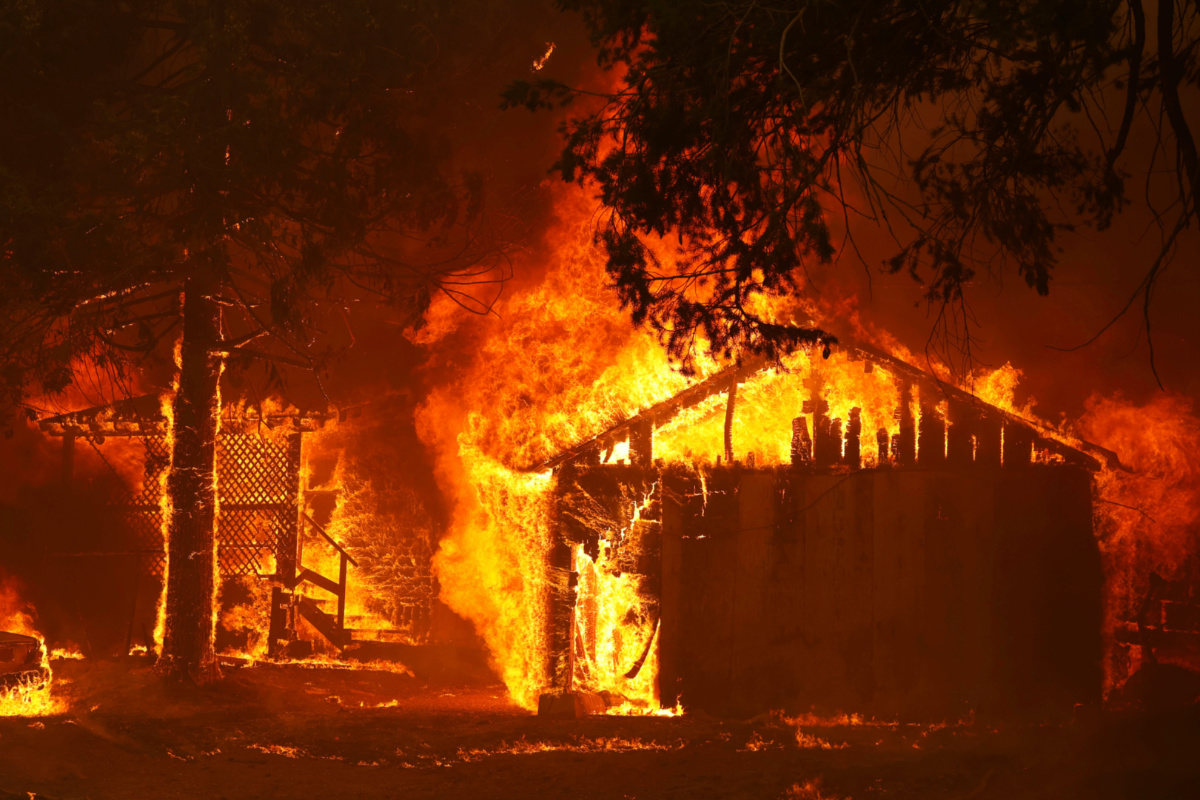London, UK
Reuters
Indonesia’s peatlands, California’s forests, and, now, vast swathes of Argentine wetland have all been ravaged by extreme wildfires, heralding a fiery future and the dire need to prevent it.
With climate change triggering droughts and farmers clearing forests, the number of extreme wildfires is expected to increase 30 per cent within the next 28 years. And they are now scorching environments that were not prone to burning in the past, such as the Arctic’s tundra and the Amazon rainforest.

A house is fully engulfed by flames at the Dixie Fire, a wildfire near the town of Greenville, California, US, on 5th August, 2021. PICTURE: Reuters/Fred Greaves.
“We’ve seen a great increase in recent fires in northern Syria, northern Siberia, the eastern side of Australia, and India,” said Australian Government bushfire scientist Andrew Sullivan, an editor on the report, released Wednesday, by the UN Environment Programme and GRID-Arendal environmental communications group.
At the same time, the slow disappearance of cool, damp nights that once helped to temper fires also means they are getting harder to extinguish, according to a second study published last week in the journal Nature.
With night time temperatures rising faster than day time ones over the last four decades, researchers found a 36 per cent increase in the number of after-dark hours that were warm and dry enough sustain fire.
“This is a mechanism for fires to get much bigger and more extreme,” said Jennifer Balch, lead author of the Nature study and director of the University of Colorado Boulder’s Earth Lab.
“Exhausted firefighters don’t get relief,” which means they can’t regroup and revise strategies to tackle a blaze.
The consequences of extreme fires are wide-ranging, from loss and damage to costly firefighting response. In the United States alone, the UNEP report said the economic burden of wildfire totals as much as $US347 billion annually.
With California’s forests ablaze, the state government spent an estimated $US3.1 billion on fire suppression in the 2020-21 fiscal year.
The fires raging since December in Argentina’s Corrientes province have taken an enormous toll, killing Ibera National Park wildlife, charring pasturelands and livestock, and decimating crops including yerba mate, fruit, and rice. Losses already have exceeded 25 billion Argentine pesos ($US234 million), The Argentine Rural Society said.
The UNEP report calls on governments to rethink wildfire spending, recommending they put 45 per cent of their budget toward prevention and preparedness, 34 per cent toward firefighting response, and 20 per cent for recovery.
“In many regions of the world, most resources go toward response – they focus on the short-term,” said Paulo Fernandes, a contributing author of the UNEP report and fire scientist at Universidade of Tras-os-Montes and Alto Douro in Portugal.






